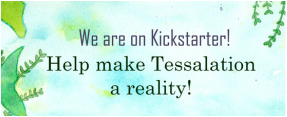First, an educationSo you want to write a children's picture book? There's a lot of advice out there. Whether or not you choose to self-publish or present your picture book to traditional publishers though a literary agent, you'll have dozens of decisions to make to take your book from idea to the printed page. My goal in compiling this list is to share with you some of the resources I've found helpful to write, illustrate and market a children's picture book. Before you even start writingKnow what compels you If you're not already a reader of children's pictures books, think long and hard about what makes you want to write one. At this early stage, your time is best spent re-reading your favorites and truly understanding what makes you love them. I like this helpful blog post about what makes a children's picture book successful. My personal favorites are in this blog post about book covers. Learn the market Brian Klems, over at Writers Digest, has a very good breakdown about how to access the market for children's pictures books before you even put pen to paper (or fingertip to QWERTY). Educate yourself quickly about process Once you've educated yourself about the realities of the marketplace, take a few minutes and read this easy-to-digest explanation of how to write a children's book from Buzzfeed. Gotta love Buzzfeed -- so edible, so snacky! Remember best practices Now you know basically how it works, right? But don't forget all of the things you SHOULDN'T do when you set out to write such a book. This list from author Alice Kuipers is helpful in that department. Turn to the masters for advice Do you love Mem Fox? What, you don't know Mem Fox? What's wrong with you. Anyway, here's a snappy breakdown of hints for writers from Mem Fox. And now go out and buy Where is the Green Sheep? Once the book is writtenLearn how to self-edit This website by author Patrice Sherman doesn't look like much (the interface is really bare bone) but it has a lot of useful information on how to do a critique for a children's picture book. Think like an editor In a similar vein, here are the 10 questions Penguin editors ask themselves when they are looking at acquiring a book. Form a group Is the text of your book completed? You might consider starting a critique group for your children's picture book. The always knowledgable and share-worthy Jane Friedman has some excellent advice on her site about how to go about finding the right critique partner for you. Hire some help Are you having trouble finding competent readers for your picture book? Not trying to be cruel here, but most of us aren't schooled in the fine art of preparing picture books for publication. If you find the comments you are getting from your readers aren't specific enough and you need a professional opinion, you could consider hiring a freelance editor to look at the text. You could do some creative googling. Look for someone like this with a track record of successful projects. Need more help with text?E-books are a great resource on children's book publishing, especially picture books. If you're putting your book together yourself, you could read Aaron Shepard's book on how to format images for Kindle E-books. Darcy Pattison has an all-around decent book that walks you through the steps of writing a picture book, taking into account the standards of the industry, including the 32-page standard. Once the text and illustrations are done: Children's Picture Book Marketing WebsitesConsider the costs On her popular blog about the perilous world of publishing, Jane Friedman has a nice guest post about whether children's authors should be self-publishing, including a nice takedown of the costs to self-publish a children's picture book. Self-publish or perish? This guest post from Darcy Pattison, also on the Jane Friedman page, gets into the nitty gritty about why she has moved from mainstream publishing to an independent publishing model, including questions of finding illustrators and distribution. Go to the kids If school visits are something you'd like to pursue, I like the list "Tips for a Successful School Visit" on this blog about children's book promotion. Make some eye candy Darcy Pattinson also has this wonderful post about how to market a children's picture book on Pinterest. She's clearly not afraid to show what she has learned in the process, which I deeply admire. By the way, I just started a Pinterest board about tessellations, no surprise there! Get creative with marketing I like this list from Aaron Schep, who writes on his blog about how to get a children's book out into the world and in front of peoples' eyes. Fund by crowd Kickstarting a children's picture book is no simple venture. If you're interested in learning more about the process, the HuffPost goes into detail about what you should know before you dig in. I'm going to be doing a longer post on Kickstarter, but this is a good start. Have you found any useful resources for publishing children's picture books? Please share in the comments!
4 Comments
11/10/2020 08:12:16 am
My favourite blog and its printing is held for the organization for the books. Scripts of the are suggested for the saint. The colour is attractive for the main idea of the placement for the clues for options.
Reply
Betty
1/28/2021 03:28:02 am
Great Post
Reply
9/29/2021 12:48:58 pm
When we want to write a children's book it is very important to study the market properly as you have mentioned in this blog post. I am sure that with the help of this blog post I can publish my own book for children. Thank you for sharing your valuable knowledge with us.
Reply
Leave a Reply. |
AuthorEmily Grosvenor, author of Tessalation!, a children's book about tesselations and patterns in nature. Archives
October 2022
Categories |


 RSS Feed
RSS Feed
